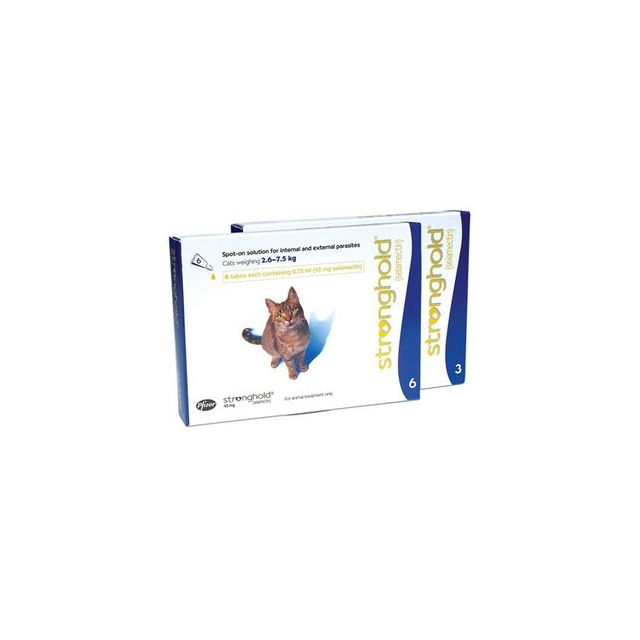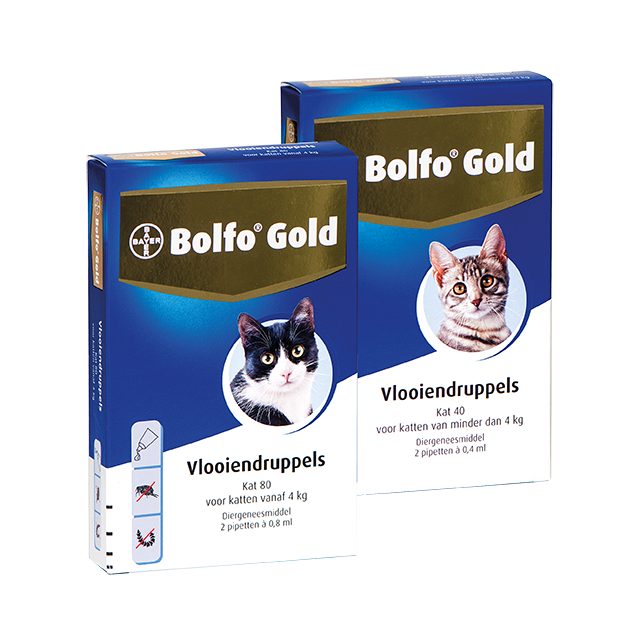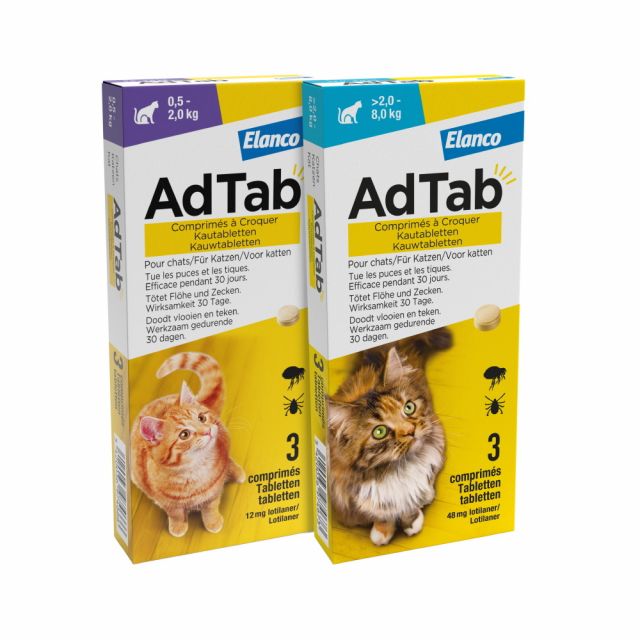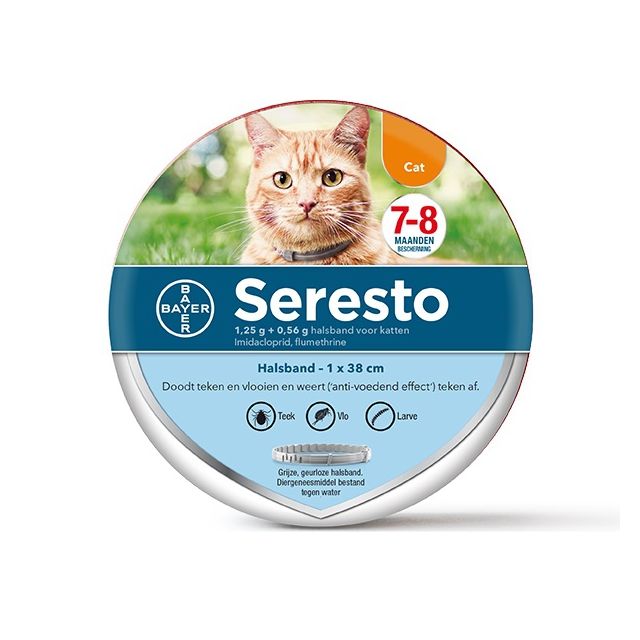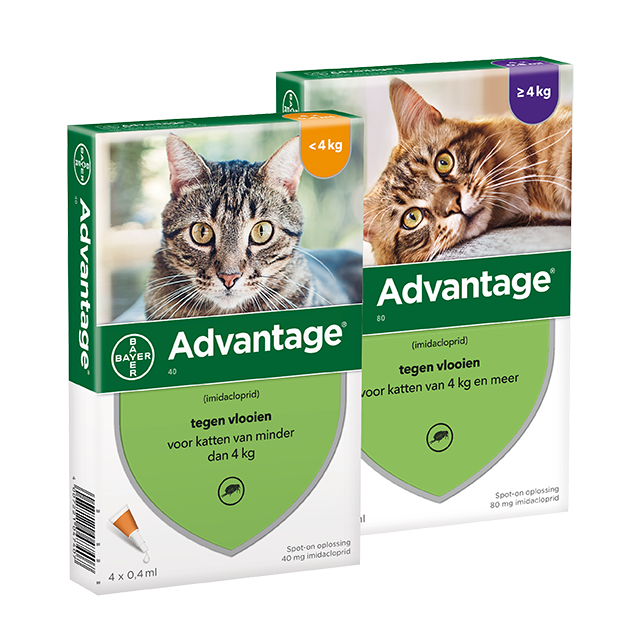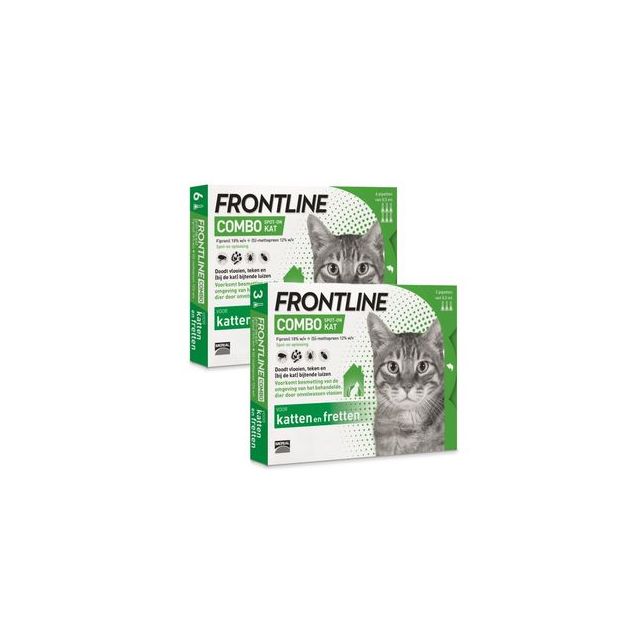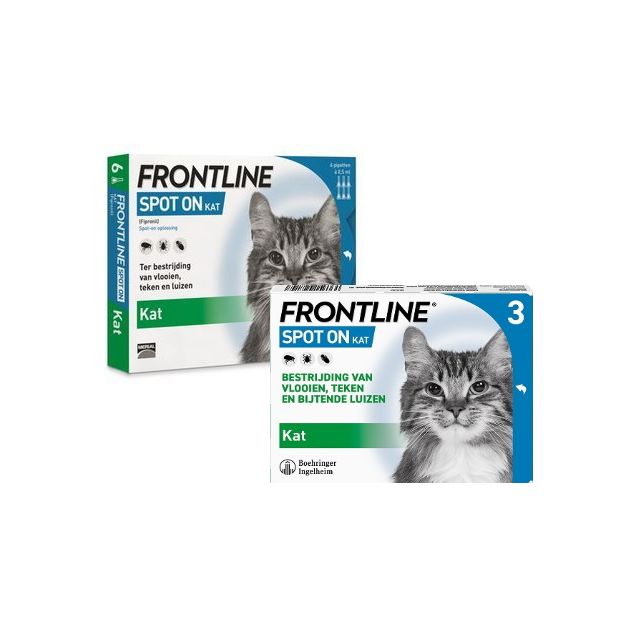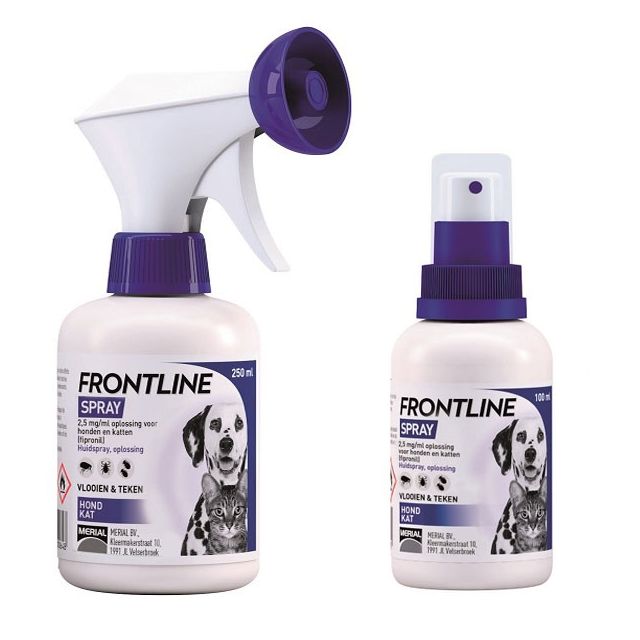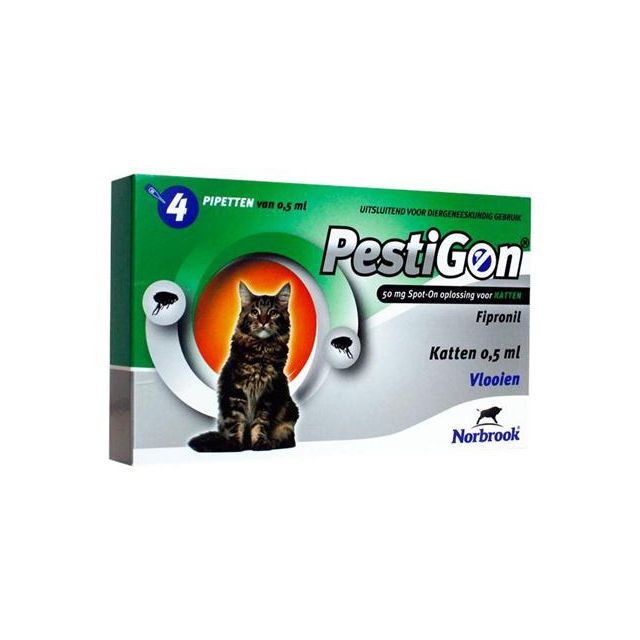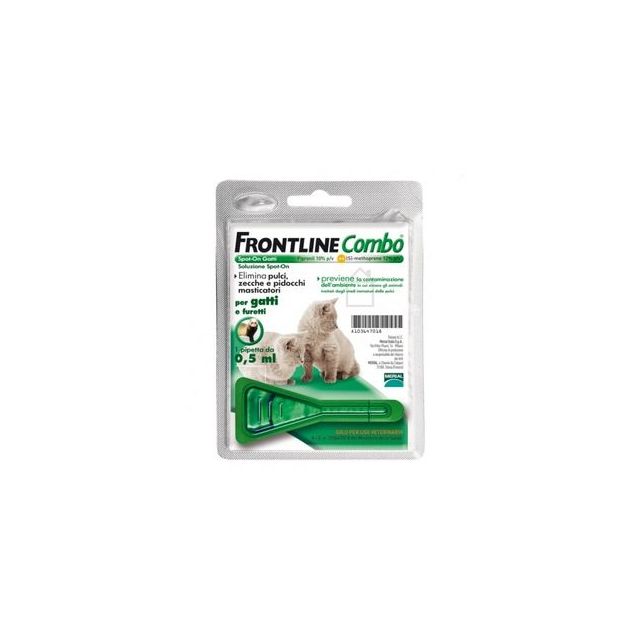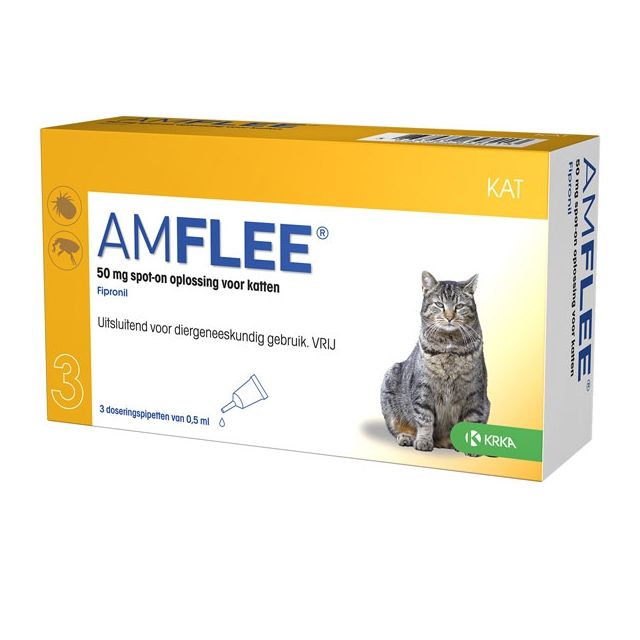Fleas on kittens
Fleas are incredibly common. Although they are mainly an issue during warm and humid periods, they can occur year-round and remain the main cause of itching in cats. Even indoor-only cats can get fleas, so it’s not unlikely that your kitten will encounter them sooner or later. In fact, many kittens already come from the nest with fleas. Aside from severe itching, a heavy flea infestation can cause anemia, which in very severe cases, especially in very young kittens, can even lead to death. Fleas can also be a source of tapeworm infection. Pharmacy4pets helps you to rid your kitten of fleas and prevent reinfestation.
The Flea Cycle
Fleas feed on your kitten's blood and lay eggs in its fur. A single flea can lay up to 1000 eggs over its lifetime! These eggs fall off your kitten's fur and end up in the surrounding environment. The eggs hatch after a few days. The larvae then hide in dark spots, such as floor cracks, under furniture, or deep in carpets. They feed on house dust, skin flakes, and the droppings of adult fleas. After a while, the larvae pupate and can survive for months in their protective cocoon. Due to certain stimuli (e.g., warmth, vibrations), adult fleas emerge from the cocoons, seeking food and finding their way to your pet. These fleas lay new eggs, and the cycle begins again. The cycle can be completed in just fourteen days, but a pupa can also wait for months until favorable conditions arise. A notorious example is a sudden infestation upon returning home from vacation after a long absence of people and animals, causing a severe flea outbreak.
Checking Your Kitten for Fleas
Carefully combing your kitten’s fur with a flea comb can help you find adult fleas or flea droppings. Fleas tend to gather at the base of the tail, armpits, and groin. You can recognize fleas by their flattened appearance when viewed from the side. They don’t walk or fly but jump. Flea droppings look like dark brown to black grains, often mistaken for sand. However, it’s easy to distinguish between the two by tapping the grains onto a sheet of white paper, adding a drop of water, and smearing it. Since flea droppings consist of dried blood, they turn reddish-brown when moistened. Sand, however, will remain unchanged in structure and color. Flea eggs are not visible to the naked eye.
Treating Your Kitten for Fleas
Fleas can be very persistent and need to be treated thoroughly with the right products. Not all products are suitable for very young kittens, so the choice of product depends on your kitten's age, weight, and your preference. Pharmacy4pets offers a variety of treatment methods so you can choose the one that best suits your kitten. See below for a convenient table overview of the available products and the minimum age/weight requirements for each.
Flea Drops for Kittens
Using flea drops in pipette or spot-on form is a fast and effective way to rid your cat of fleas. Advantage and Vectra Felis effectively kill fleas on your kitten and can be used from 8 weeks of age (Advantage) or from a body weight of 600 g (about 6 weeks, Vectra Felis). For very young kittens, Stronghold is a good choice. It can be used on healthy kittens from six weeks of age and also works against lice, roundworms, and (ear) mites. Stronghold is only available by prescription from your veterinarian. These products are safe, kill fleas quickly, and provide around 4 weeks of protection.
Flea Collar for Kittens
A flea collar has a long-lasting effect and also works against ticks. The Seresto Tick and Flea Collar protects your kitten from 10 weeks of age for up to 8 months against ticks and fleas. When using the collar, it is important for the active ingredients to have contact with the skin. The collar must therefore be worn snugly to work effectively.
Flea Tablets
Tablets like Adtab and Credelio work against both fleas and ticks. The tablets can be given to kittens from 8 weeks of age and with a minimum weight of 500 g and are effective for one month.
Flea Spray
You can also treat your kitten for fleas with a flea spray. Sprays from Frontline and Effipro can even be used on very young kittens (use the 100 ml variant, applying 1 spray per 125 g of body weight; the 250 ml spray has a different dosage: 1 spray per 400 g of body weight). The spray should be applied over the entire coat. Most cats find sprays very frightening. A good solution is to spray the required amount into a glove and spread the liquid over your kitten's fur. Unfortunately, resistance to fipronil, the active ingredient in products like Frontline, is becoming more common. Additionally, spraying and completely rubbing it in often cause stress, but it is the only option for kittens weighing less than 500 g.
Flea Shampoo
Flea shampoo is only a way to kill the fleas currently on the fur. It has no lasting effect, so shortly after washing, fleas from the environment can reinfest your kitten. Furthermore, washing is extremely stressful for most cats, and the shampoo can strip the cat’s natural oils, reducing the effectiveness of some flea drops and sprays if used within two days before or after washing. Therefore, flea shampoo is rarely recommended for optimal flea control.
Natural Remedies for Fleas and Ticks
Certain natural remedies, like essential oils (e.g., citrus oil, peppermint oil, eucalyptus oil) and garlic, are believed to have anti-flea effects. However, the efficacy and safety of these products are not scientifically proven, which is why they are not registered as anti-parasitic products. Some of these natural substances are even shown to be highly toxic for cats. Therefore, the use of these remedies is discouraged.
Treating Fleas in Your Home
Only 5% of fleas live on your cat. This means that up to 95% of fleas are in your home environment. By treating both your cat and your home simultaneously, you can get the flea problem under control faster. Did you know that thorough vacuuming can remove up to 50% of the eggs and pupae? By combining this with washing blankets and bedding at high temperatures and using an environmental spray, you are likely to get the infestation under control. Don’t forget to spray the vacuum cleaner bag after vacuuming! Environmental sprays are often very toxic to cats. During spraying, place your cat in a closed room, like the bathroom or garden, ventilate well, and ensure everything is completely dry before allowing your cat back into the treated area. If you have other pets like a dog, don't forget to treat them as well.
Note: If you have both a dog and a cat, it’s important to know that cats cannot tolerate permethrin, a flea treatment safe for dogs. Permethrin, found in products like Advantix, can cause neurological symptoms in cats. Flea products for dogs should not be used on cats. It’s even safer to choose a non-permethrin product for your dog if you also have a cat, especially if they are in frequent contact. Most environmental sprays also contain permethrin.
If you have questions about fleas in your kitten or Pharmacy4Pets products, please contact us.
|
Product |
Application Method |
Usable From |
Effective Against |
|
Spot-on |
8 weeks |
Fleas. |
|
|
Amflee and Amflee Combo* |
Spot-on |
8 weeks and 1 kg*** |
Fleas, ticks, lice. |
|
Spot-on |
8 weeks and 1 kg*** |
Fleas, ticks. |
|
|
Frontline Combo, Frontline Kitten and Frontline* |
Spot-on |
8 weeks and 1 kg*** |
Fleas, ticks, lice. |
|
Vectra Felis |
Spot-on |
600 g |
Fleas. |
|
Pestigon and Pestigon Combo* |
Spot-on |
8 weeks and 1 kg*** |
Fleas, ticks, lice. |
|
Stronghold** |
Spot-on |
6 weeks |
Fleas, lice, ear mites, mange mites, heartworm, roundworm, hookworm. |
|
Spot-on |
8 weeks and 1.25 kg*** |
Fleas, lice, ticks, ear mites, heartworm, roundworm. |
|
|
Advocate** |
Spot-on |
9 weeks |
Fleas, (ear) mites, heartworm, lungworm, roundworm. |
|
Collar |
10 weeks |
Fleas, ticks. |
|
|
Spray |
2 days (100 ml) |
Fleas, ticks, lice. |
|
|
Spray |
2 days (100 ml) |
Fleas, ticks, lice. |
|
|
Tablet |
8 weeks and 500 g |
Fleas, ticks. |
|
|
Credelio** |
Tablet |
8 weeks and 500 g |
Fleas, ticks. |
*Fleas are developing resistance to the active ingredient fipronil.
**Only available by prescription.
***Both conditions must be met. Most kittens of 8 weeks weigh around 800 g, making them too light for this product.

